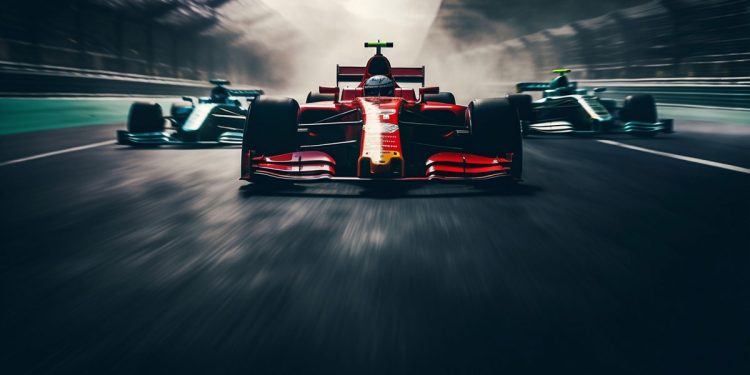F1’s Growing Popularity Marks the Beginning of a New Era in Racing

Just a few short years ago, conversations in Formula 1 revolved around the sport’s steady popularity decline starting around 2008, with many going as far as predicting the demise of the king of motorsports. The drop in popularity was the result of a combination of factors, including the lack of innovation, calendar changes, new regulations that negatively impacted the entertainment value of the competition, and Ferrari’s fall from grace. Fans were simply disenchanted by the action on the tracks, and the drastic slump in viewership rates reflected this sentiment.
Fast forward to the present, and the narrative did a full 180-degree turn. F1 news tell a completely different story today than they did a few seasons back. People are once again tuning in to F1 racing, with the 2023 season setting new records in terms of viewership and F1 quickly expanding its fan base across the United States, where NASCAR and IndyCar have always dominated the motor racing landscape, and interest in F1 has been historically low.
It’s crystal clear that F1 is experiencing a major revival that has brought the sport back into the spotlight and on the edge of a new era. But it’s less clear what has prompted these shifts in popularity and viewers’ attitude. Many have attributed F1’s newfound fame and fortune to the hype created by Netflix’s Drive to Survive series, but this argument doesn’t quite cut it as it doesn’t explain other key aspects of F1’s evolution.
The Netflix effect and its ramifications
2019 saw the release of the now uber-popular Netflix series Formula 1: Drive to Survive. A total of six seasons have been broadcast since then, each of them covering the events of the yearly F1 championship. The program was well received by the public and did a great job at promoting F1 to audiences worldwide by providing a captivating glimpse into the inner workings of the F1 circus, complete with racing drama, rivalries and a healthy dose of humour.
People who had previously no interest or knowledge about Formula 1 suddenly found themselves drawn into the fascinating world of F1 racing. The documentary series offers direct access to behind-the-scenes content, allowing viewers to get to know the drivers and gain a better understanding of F1 dynamics rather than simply presenting race outcomes and official statistics.
The power of the Netflix effect purportedly helped F1 finally broaden its reach beyond the Old Continent, where the sport has its roots, and win the hearts of millions of Americans. According to a 2022 survey, 28% of Americans describe themselves as F1 fans, and the release of Netflix’s hit series was what converted half of them to the sport.
However, despite this surprising statistic, F1 viewership figures among US audiences are not nearly as high as expected, with ESPN, the official broadcaster of F1 in the US, recording an average of 1.1 million viewers per race during the 2023 season. This proves it’s not possible to accurately quantify the impact that Netflix has had on F1’s trajectory over the past years, nor should its effects be reduced to how many people have been watching the races since the show started airing.
For all the publicity it has brought to F1, Netflix’s implication is but one piece of the puzzle – possibly the one that served as the trigger for F1’s break into the mainstream – being part of a larger story that encompasses various other key areas related to the Grand Circus. Contrary to common belief, Netflix’s biggest achievement was not convincing more people to watch F1, but bringing the motorsport to the public’s attention and making them love it even without following the live action on the circuits.
A more diverse fanbase
As more people around the world have started to get a taste of F1’s heady mix of adrenaline, glamour and spectacle, its fan base has grown more diversified. For the longest time, F1 has largely been regarded as the preserve of men. It’s usually men who are into racing, not women, and let’s not forget we’re talking about a male-dominated sport. There wasn’t much variety in the profile of the average F1 fan.
However, the onset of the pandemic changed this dynamic to some extent. With people stuck at home, standing in front of their screens and binging on Netflix series, many of them found their way to F1. This led to the creation of large online communities made of casual viewers and content creators, all united by their common love for F1 racing.
This newly minted generation of F1 fans would go online to check the latest news on sites like Grandprixnews.com and talk about the events on forums or on social media platforms. And the demographic composition of these groups shows great variety. It’s now estimated that up to 40% of all F1 fans are female – a significant jump from the 8% registered in 2017. And it’s not just car or motorsports aficionados who enjoy the F1 action, but all kinds of people from all backgrounds and walks of life.
F1 has taken the social media route
Unlike other sports that have been quick to jump on the social media bandwagon, F1 was late to the party, but it has now fully embraced the social networks movement. Netflix’s Drive to Survive might have ignited the spark and generated F1 awareness, but now people are increasingly turning to social media to consume F1-related content.
YouTube, in particular, has proved to be a great platform for attracting F1 enthusiasts, offering an endless stream of bite-sized videos from races and team radio clips that delight audiences. All channels that provide F1 material seem to draw in a consistent number of viewers, proving that F1’s foray into social networks has helped consolidate its online presence and open new venues for its development. Considering all these factors, the future seems brighter than ever for F1.










